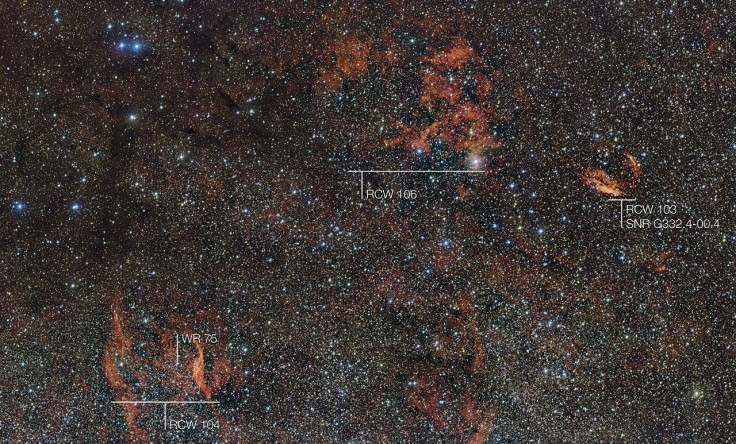For Giant Stars More Massive Than The Sun, Life Is Fleeting And Mysterious

In the universe, not all stars are created equal. Some, like the sun, live an easily understood life that ends without much drama. An O-type star, on the other hand, lives a short life that ends in an explosive supernova. A new image from the European Southern Observatory, released Wednesday, explores a region of the southern sky where these stars are hidden within large clouds of gas.
In the region of the southern constellation of Norma, located 12,000 light-years from Earth, bright young stars are illuminating these gas clouds. The area is of particular interest because O-type stars, which account for one in every 3 million stars in the night sky, are extremely rare in the universe due to their short (in galactic terms) lifespans, lasting just tens of millions of years. For a comparison, the sun is over 4.5 billion years old and will live for at least another 4.5 billion to 5.5 billion years.
O-type stars are the most massive of the main-sequence stars, with masses dozens of times that of the sun. The origin of these incredibly bright and hot stars is not well-understood. Unfortunately for researchers, there are no O-type stars close enough for detailed study.
In order to grow to such a size, O-type stars need to acquire a lot of gas. A star like the sun forms after enough gas is pulled together by gravity, and an increase in temperature and density leads to nuclear fusion that powers these stars.
It's unclear how these celestial objects acquire such quantities, according to the ESO. After their formation, the stars quickly burn through their fuel, and their lives end as supernovas. The sun, on the other hand, will become a red supergiant before it quietly ends its life as a white dwarf star.
© Copyright IBTimes 2025. All rights reserved.




















